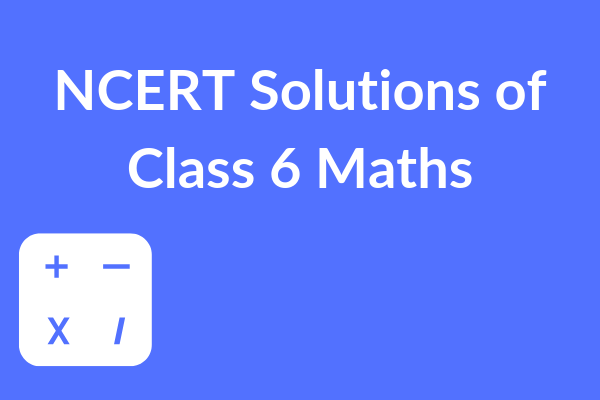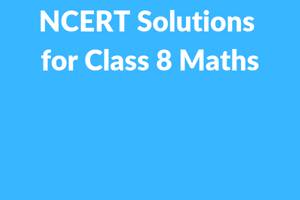Building a strong base in mathematics in the middle-school is very important for mathematics...
6th Standard Maths CBSE Updated Chapters & Syllabus 2020-2021
Maths is an important subject that is applicable to several other academic courses. Class 6 maths or 6th standard maths syllabus is critical in developing the base or foundation for higher-level mathematics. Class 6 maths syllabus in the CBSE system contains some important and crucial chapters that require careful understanding by the students.

Class 6th is often a transition period for students when they are entering from primary school to middle school. This transition period brings with a lot of academic, non-academic as well as personality changes. A student might feel overburdened with this sudden change from primary school to middle school.
This change is often relevant in the maths syllabus as well. As class 6 maths syllabus broadly covers a variety of topics including number system, integers, geometry, algebra, etc, 6th grade maths may sometimes seem challenging to students who aren’t ready to practice multiple topics.
However, with a guided approach, right mentor, some dedication and hard work, and focussed understanding, any student can easily sync with the ‘class 6 math syllabus’. If due to the sudden change from primary to mid-school, students feel under-pressure, then the best way to accelerate the confidence is solving ‘class 6 math question paper’. Practicing questions based on the CBSE syllabus in NCERT 6th class lessons can help students fight the fear of numbers, algebra, geometry, and other chapters.
Kapdec has a huge data bank of interactive videos, tutorials, quizzes, and question papers for class 6th maths to help students move through this transition with great ease. We suggest logging in to the Kapdec math e-learning academy to unleash its major benefits for understanding mathematics more easily. We, at Kapdec, provide a brief overview of ‘6th grade maths’ syllabus as per the CBSE guidelines in this article. Read to catch a quick view of all important topics in class 6h mathematics.
‘NCERT math book class 6’ contains the following chapters.
Blog Contents
First chapter in 6th standard maths
Is about Knowing the number system. In this chapter, class 6 maths students are introduced to topics such as comparing the numbers, large numbers in practice, using brackets, and the roman numerals.
Second chapter in 6th standard maths
Is about whole numbers. Here, students are introduced to topics such as understanding the whole number system, the number line, properties of whole numbers, and various patterns in whole numbers.
Third chapter in the NCERT math book class 6
Is also deals with the numbers. The third chapter is about Playing with numbers. As this chapter itself sounds fun, it includes a lot of practice and activities. This chapter in class 6th maths syllabus is perhaps a crucial one sue to many topics that will form the base for higher mathematics studies. This chapter introduces the 6th grade maths students to topics including Factors and Multiples, Prime and composite numbers, tests for the divisibility of numbers, common factors, and common multiples, divisibility rules, prime factorization, Highest common factor (HCF), Lowest common multiple (LCM), and problems on HCF and LCM.
With this third chapter, the first part of the ncert 6th class math syllabus is completed.
Fourth & fifth chapter of the ncert 6th class maths book
Is about geometry and geometrical shapes, which comprises the second part of the 6th class maths. The fourth chapter is about Basic Geometrical Ideas. This chapter gives students some ideas about points, line, and line segments, intersecting lines, parallel lines, a ray, curves, polygons, angles, triangles, quadrilaterals, and circles.
Fifth chapter 6th class maths
Is basically an elaboration of the fourth one. It goes deeper into understanding elementary shapes and performing various calculations with geometrical formulas. This chapter includes topics such as measuring line segments, categorizing the angles based on “right”, “straight”, “obtuse”, “acute” and “reflex”, measuring angles, perpendicular lines, classification of triangles, quadrilaterals, polygons, and three-dimensional shapes.
Moving to the next section of the 6th standard maths syllabus, we have succeeding chapters as Integers, fractions, and decimals that are the sixth, seventh and eighth chapters in the class 6th maths book respectively. These three chapters are largely calculations and formula-based. Students have to practice a lot of formulas and calculations multiple times to excel in these chapters. These include many topics pertaining to integers, fractions, and decimals.
The next chapter essentially deals with the representation of mathematics in pictorial form. This chapter, named as Data Handling is also a very important one as it’s concepts are highly applicable in later studies and even in the corporate and business industry. However, the data handling chapter in the 6th class maths syllabus only introduces some basic topics like recording data, organization of data, pictograph, interpretation of pictograph, drawing pictograph, and bar graph. Elaboration on these topics is studied in the later classes but understanding the basic concepts in the 6th class is important.
The next chapter in NCERT math book class 6 is about the measurement on the basis of area, volume, etc. This chapter is named as “Mensuration” and mainly focusses on area and parameter. Just like the Data Handling chapter, elaboration on these topics is studied in further classes but learning the basic concepts in class 6th is important.
Moving to the next section of 6th grade maths, the next chapter deals with the Algebra, as an important part of middle-school mathematics. This chapter introduces the students to topics such as variables, equations, matchstick patterns, and some more. This gives a basic overview of algebra to the students and grabbing all the necessary information from this chapter is important to form a strong foundation for solving complex algebraic equations in the higher classes.
As said, the 6th standard maths is about a transition period from primary school to middle school, students are introduced to many new topics and concepts. One such concept is introduced in the next chapter of the ncert 6th class math as per the CBSE syllabus. This chapter, named “Ratio and Proportion”, introduces the students to ratios, proportions, and the unitary method.
The last two chapters of class 6 math syllabus focus on the extension of geometrical mathematics. These two chapters namely, “Symmetry” and “Practical Geometry” deals with topics such as symmetrical figures and problems based on various geometrical shapes and angles precisely, the circle, line segment, perpendiculars, and the angles.
It is clear from the above brief-view of the NCERT 6th class math syllabus as per the CBSE guidelines in India, that students will have to study various new topics and important concepts that develop base for further studies. Therefore, a sudden introduction to a variety of topics here may make students a bit nervous. However, regularly solving class 6 math question papers is what we, at Kapdec recommend the most.
The more you will practice, more will be your confidence and understanding level. To help students understand all of these concepts better, Kapdec has unique and interactive video lessons on its e-learning portal. The Kapdec e-learning academy also have a variety of questions for “6th standard maths”. Our quizzes on the 6th class maths syllabus help students to practice and learn more.
.png?width=100&height=100&name=Kapdec%20Logo%20(400px).png)


